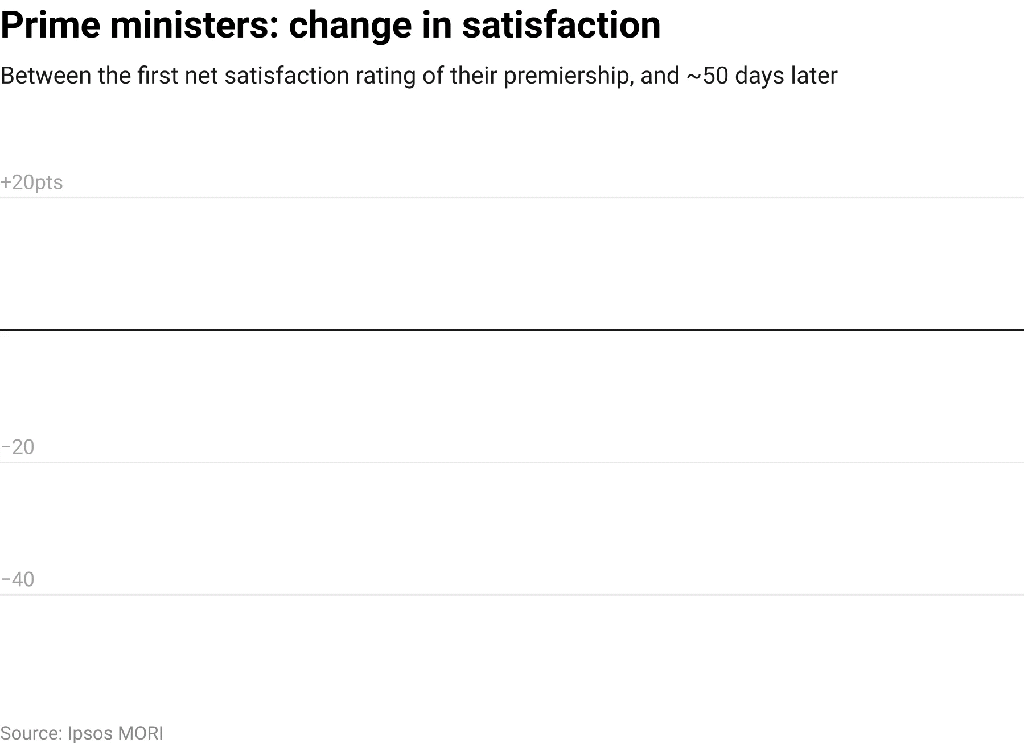Politicians’ popularity only tends to go in one direction: down. John Major entered office in 1990 with a net satisfaction rating of +15 and left it having lost 42 points. Tony Blair moved into Downing Street in 1997 with an approval rating of +60 points. When he handed over to Gordon Brown in 2007, he’d fallen to -27. Where you start can make all the difference. If things are only going to go one way, you want as handsome a starting margin as possible.
Bad news for Keir Starmer then, who has seen his popularity drop at the fastest rate of any Prime Minister other than Liz Truss. The Ipsos political monitor survey – which has been tracking Prime Ministerial performance for nearly half a century – has Starmer falling from +7 in July (the first PM to start in the positive since Theresa May) to -21: a 14-point swing in the matter of a few weeks.

Starmer is not likely to see his popularity plummet as quickly as Liz Truss. But Starmer’s fall in his first 50 days (the period between the polls) is a far cry from John Major, Tony Blair and Gordon Brown, who all initially increased their popularity upon entering office. Even Rishi Sunak saw his polling drop at a slower pace than Starmer.
Starmer’s predecessors – Boris, Truss and Sunak excluded – held onto their positive ratings for quite a while. Blair managed more than three years of positive ratings, while John Major lasted just under two. Brown only managed three.
The rest of the Ipsos poll makes for even more grim reading for Starmer's No. 10: nearly two-thirds of voters dissatisfied with how the government is running the country – a 14-point increase from July.
The majority of those polled expect the economy to get worse over the next year, too – a message Starmer and his chancellor, Rachel Reeves, have put across clearly. But if these negative messages become ingrained, history tells us what way Starmer's opinion ratings are going to go and it's not the way he hopes.
Prime ministerial popularity is tracked every month on The Spectator’s data hub.







Comments